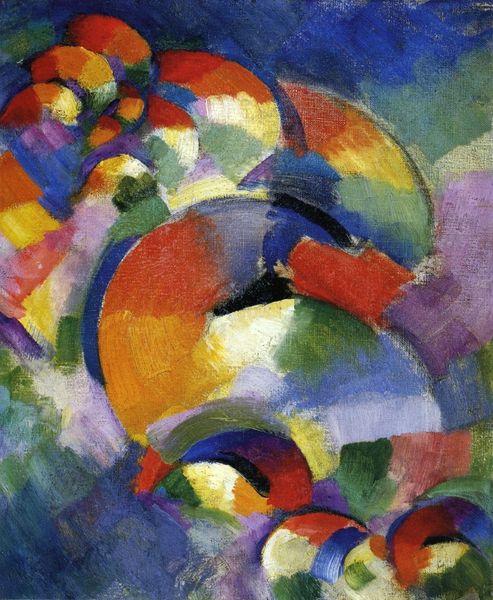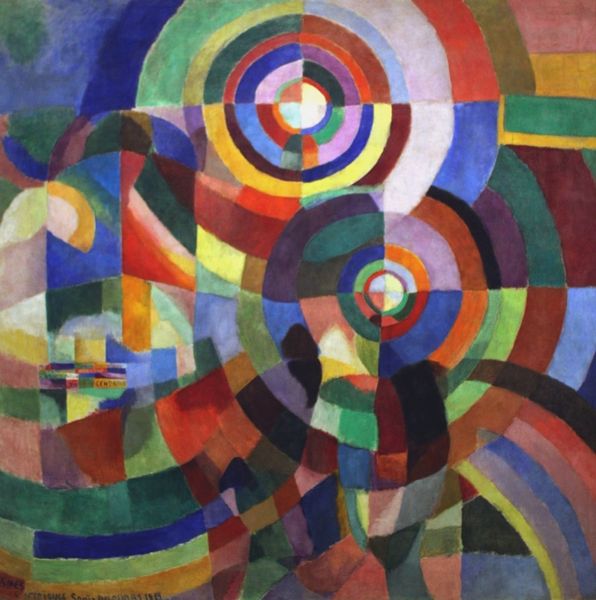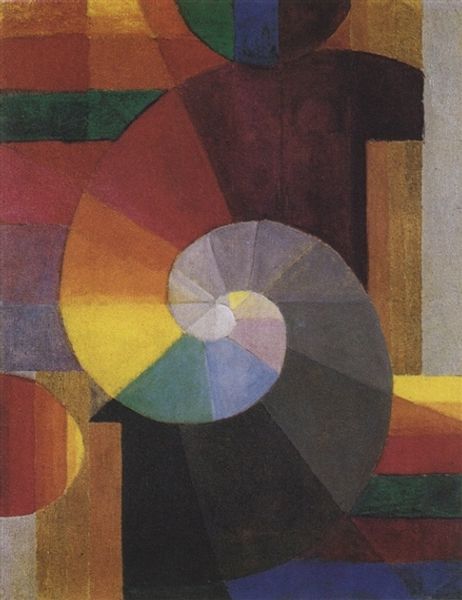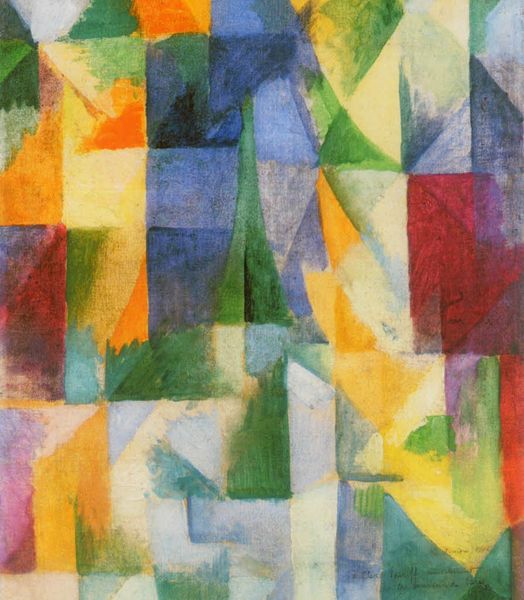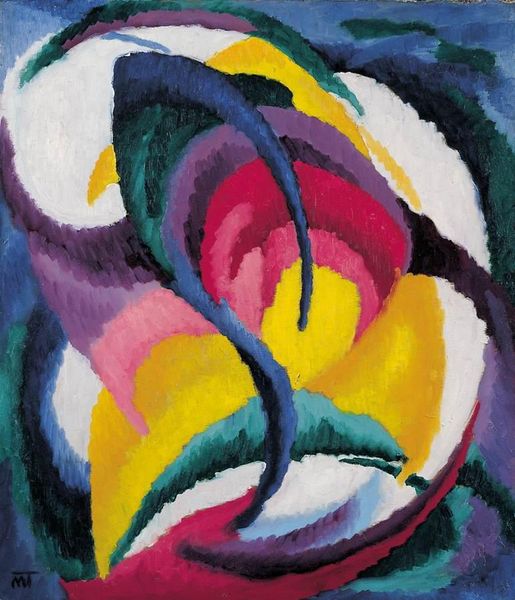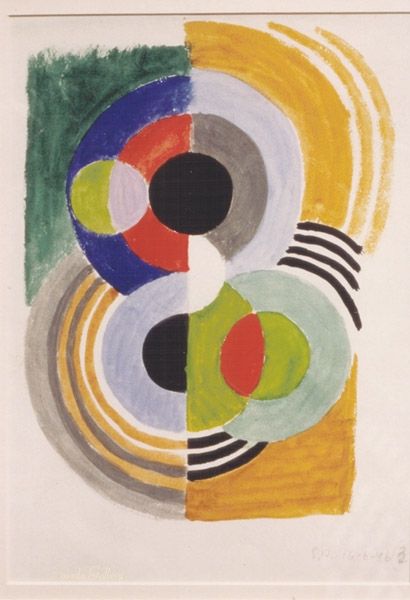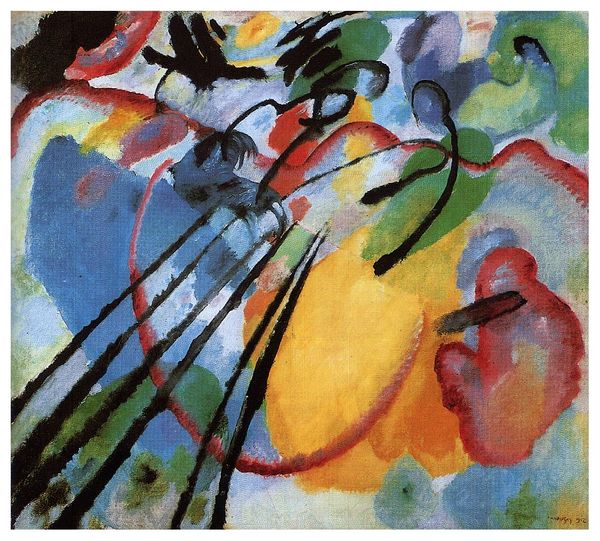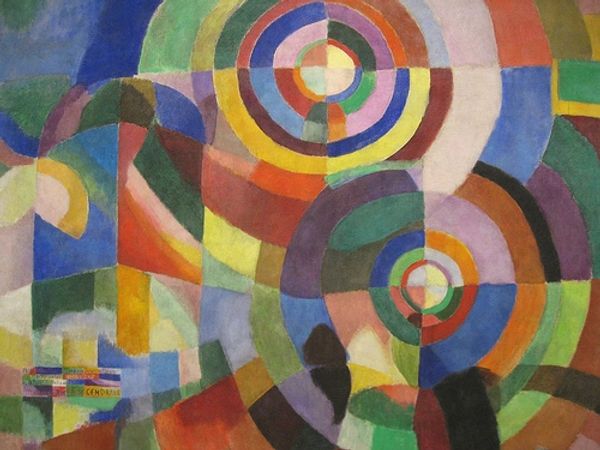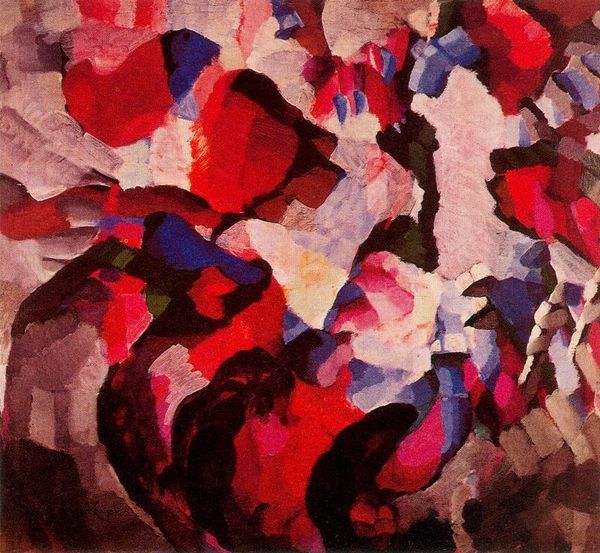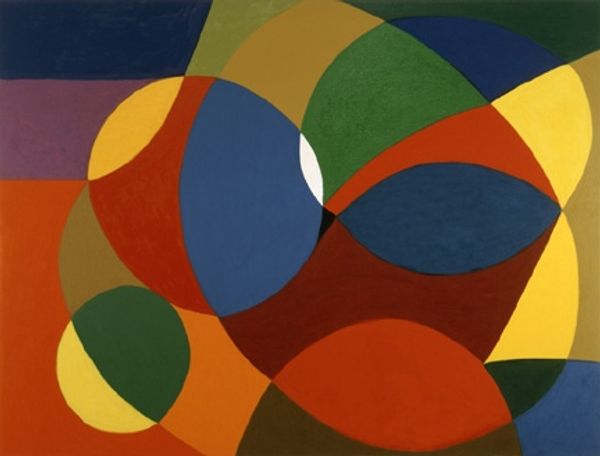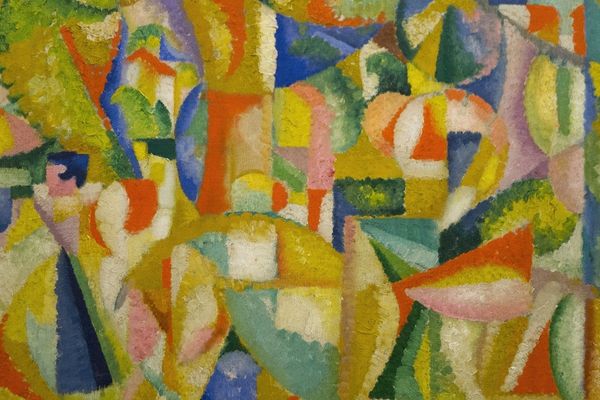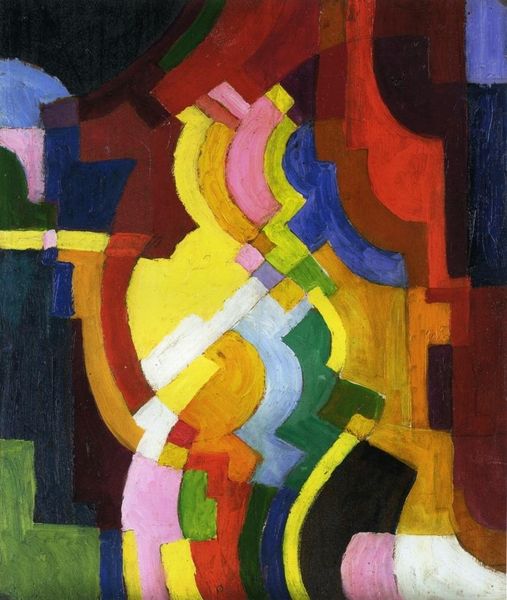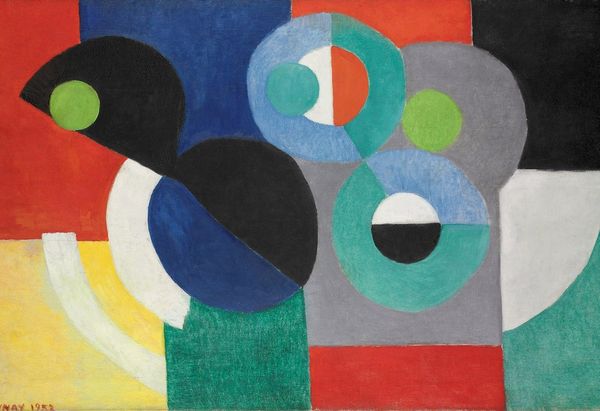
Disks of Newton, Study for Fugue in Two Colors 1911
0:00
0:00
frantisekkupka
Philadelphia Museum of Art, Philadelphia, PA, US
painting, oil-paint
#
abstract painting
#
painting
#
oil-paint
#
oil painting
#
geometric
#
abstraction
#
orphism
#
modernism
#
futurism
Dimensions: 77.5 x 73.6 cm
Copyright: Public domain US
Curator: Let's discuss Frantisek Kupka’s "Disks of Newton, Study for Fugue in Two Colors," created in 1911 using oil paint. Editor: Immediately, I’m struck by the vibrant energy! The juxtaposition of these brightly colored concentric circles is quite arresting, almost like a child's toy spun at high speed. It looks almost hypnotic. Curator: Absolutely. Kupka was deeply invested in exploring color theory, drawing inspiration from figures like Newton. The "Disks of Newton" alludes to Newton's experiments with prisms and light, and we should view this in dialogue with Orphic Cubism, examining relationships to music, and even Eastern philosophy, which held enormous influence during this era. Editor: Fascinating! For me, though, there's an emphasis here on the materials themselves: the impasto of the oil paint, the ways Kupka applies and layers the colors, and how the overall process seems almost experimental. It feels less about perfect representation and more about an investigation into how color affects matter. How were pigments like these being manufactured and consumed at the time? What did it *mean* to apply such saturated colors with these relatively new oil-based techniques? Curator: A compelling point. One can contextualize it further through considering the sociopolitical ramifications of these new technologies. Developments in color production mirrored industrial progress generally, with clear connections between consumerism, class structures, and aesthetic experience at the time. Who was benefiting from these mass production opportunities, and how does the painting express both optimistic excitement and darker truths inherent in material reality? Editor: And there’s something almost rebellious in this approach! Before industrialized processes made paint tubes accessible to even hobbyists, color creation was time-consuming. To then dissolve form completely, celebrate color as its own subject...it questions labor itself, upends the established values of craft! Curator: A valuable point, reframing ideas about access, materiality, and ultimately democratizing beauty and knowledge. The layered discourse enables critical understanding beyond traditional narratives. Editor: Thinking of labor and production in painting suddenly reframes abstract art history as material history too. I am left looking deeper at color.
Comments
No comments
Be the first to comment and join the conversation on the ultimate creative platform.
